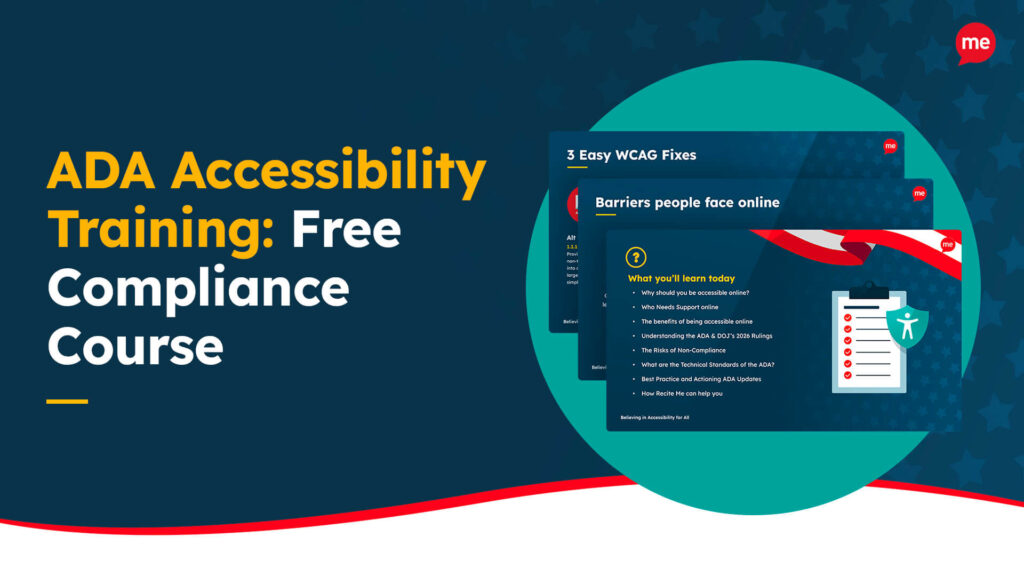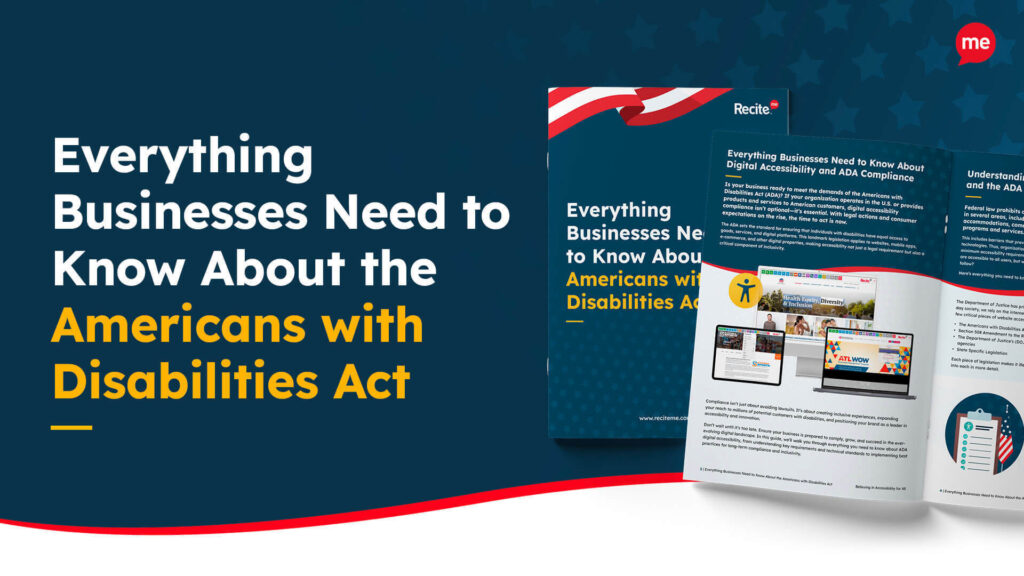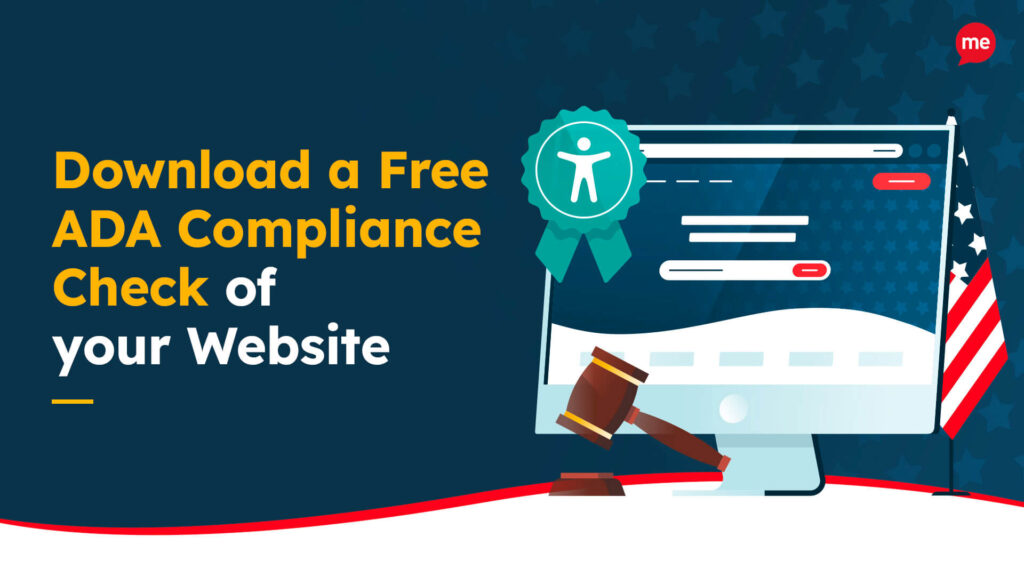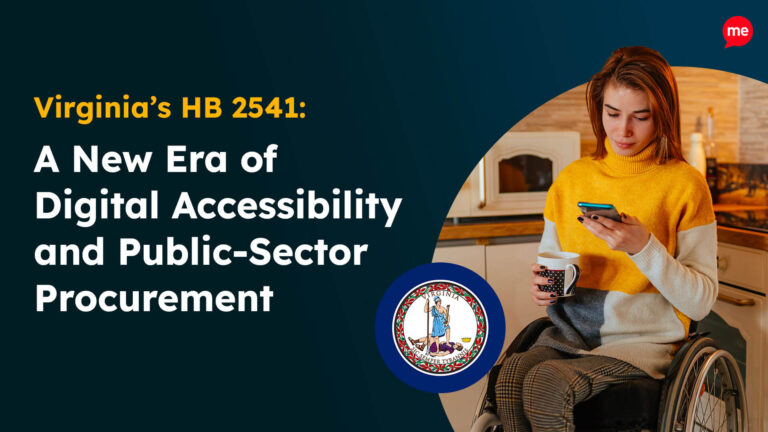Get A Free ADA Compliance Audit Of Your Website
Download NowSo you’ve got a thriving Shopify store, sales are rolling in, and you’re reaching customers worldwide. But what if I told you that failing to comply with the Americans with Disabilities Act (ADA) could derail your success? Many Shopify store owners are unaware that ADA requirements extend to their online businesses, leaving them vulnerable to costly lawsuits, which ultimately damage their reputation and lead to missed sales opportunities. The good news? It’s not too late to protect your store, and this article will show you how.
What is the Americans with Disabilities Act (ADA)?
Enacted in 1990, the ADA was brought about as a means of preventing discrimination against individuals with disabilities. Its goal is simple yet powerful: to ensure that people with disabilities have the same rights and opportunities as everyone else.
How does it achieve this aim? By mandating that organizations across all areas of public life make reasonable adjustments to accommodate disabilities. The ADA is structured into five titles, which cover exactly what applies to whom. Let’s take a look:

- Title I: Employment discrimination protections – Requires businesses with 15 or more employees to provide reasonable accommodations for disabled workers and prohibits employment discrimination.
- Title II: State and local government services – Mandates that public services, programs, and activities provided by state and local governments be accessible to individuals with disabilities.
- Title III: Public accommodations and commercial facilities – Requires businesses open to the public, including retail stores, restaurants, and online businesses like Shopify stores, to provide equal access to goods and services.
- Title IV: Telecommunications – Ensures that individuals with hearing and speech disabilities have access to telephone and internet-based communications services.
- Title V: Miscellaneous provisions – Contains additional provisions, including protections against retaliation and guidance on ADA enforcement.
While each title covers different areas, Title III is the one Shopify store owners need to pay attention to. Initially focused on physical spaces, Title III has since been interpreted by courts to include websites as “places of public accommodation”. This means your Shopify store must be accessible to everyone, or you risk facing lawsuits.
Want to make sure your website is compliant with the Americans with Disabilities Act? Then unlock the ADA compliance checklist now. Discover actionable steps to ensure ADA compliance, helping you avoid lawsuits and any other negative consequences of non-compliance.
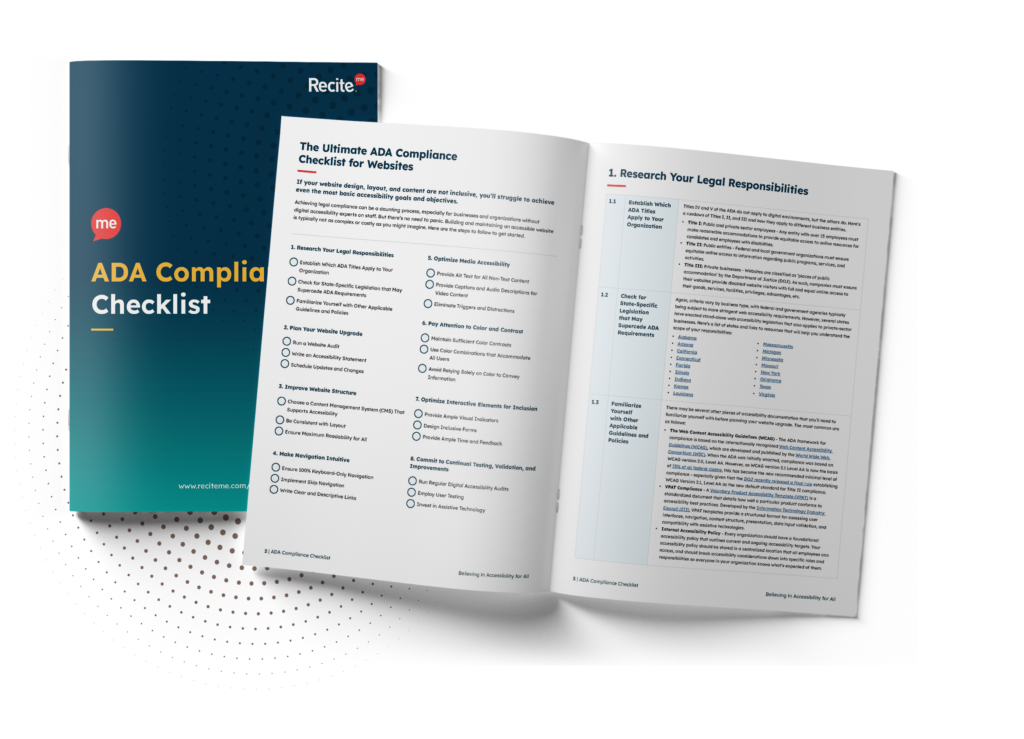
Why is ADA compliance important for your Shopify store?
First and foremost, if you are a Shopify store owner, the ADA applies to you. This fact on its own makes ADA compliance important. One misstep could result in an onslaught of lawsuits, bringing about unnecessary business risk that can end up crippling your store.
What exactly could go wrong? Let’s see:
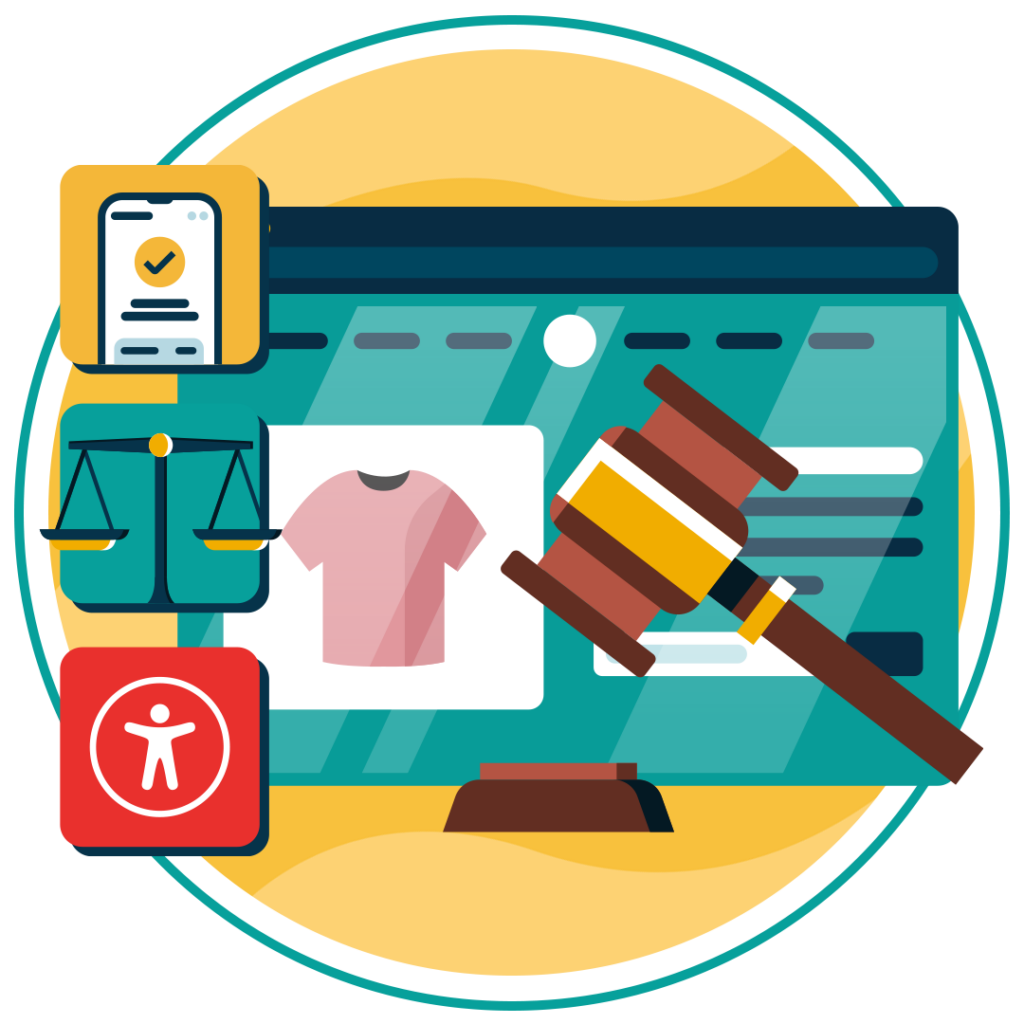
- Reputation Damage: In a world where consumers increasingly value inclusivity, an inaccessible Shopify store invites negative press and customer complaints. This can tarnish your reputation and degrade customer trust.
- Lost Business Opportunities: An inaccessible store drives disabled customers away, reducing sales and limiting your audience reach. Excluded shoppers are forced to take their business elsewhere, like more inclusive competitors.
- Financial Penalties: ADA lawsuits can lead to hefty fines and settlements. For first-time violations, businesses may face penalties of up to $75,000, while repeat violations can incur fines of up to $150,000. Legal fees and settlement costs can further drain your resources.
- Legal Liability and Increased Litigation: Shopify stores found in violation of the ADA may be subject to ongoing legal scrutiny and repeat lawsuits. Serial litigants and advocacy groups frequently target noncompliant businesses, which can severely disrupt business operations as well as budget and resource management.
While the above list outlines some very tangible business risks, it’s important to remember that adhering to ADA guidelines transcends mere legal compliance. It contributes to a more inclusive society, where historically marginalized groups not only have a voice but also the means to make that voice heard. Everyone deserves access to products and services in the 21st century, and by proactively ensuring ADA compliance, your Shopify store can serve as a beacon for positive change.
What elements could create the biggest compliance issues
A recent study by Baymard Institute found that 94% of the largest eCommerce websites fail to meet requirements set out in the Web Content Accessibility Guidelines (WCAG) — the ADA’s own benchmark for accessibility. This is indicative of a broader issue in which eCommerce sites, including Shopify stores, are lagging behind in terms of accessibility. So, what are the most common compliance issues? And how can you fix them? Let’s find out.
Inaccessible alt text
Alt text describes the contents of an image so that a screen reader can perceive this information and convey it to a visually impaired user as required. Without descriptive alt text, visually impaired users miss out on critical information stored in images. To fix this issue, provide accurate and meaningful alt text for every image, ensuring the descriptions are not too long or overwhelming, but sufficiently detailed.
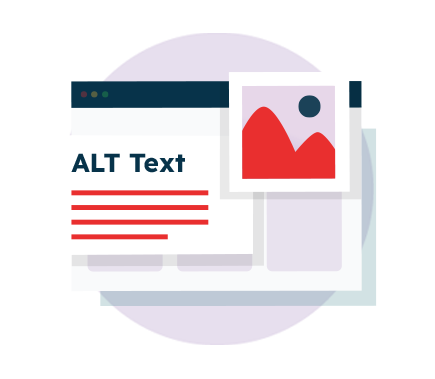
Form fields during checkout procedures
Unlabeled or confusing form fields can prevent users from completing purchases. Use clear, descriptive labels and make sure error messages are visible and instructive.
Poor color contrast
Text that blends into the background is hard to read for anyone, but especially users with visual impairments. Adhere to WCAG 2.1 Level AA by maintaining a contrast ratio of at least 4.5:1 for regular text and 3:1 for large text.

Videos without captions or transcripts
Videos are engaging, but inaccessible to those with hearing impairments unless captions are provided. Ensure captions are accurate and synchronized with what’s happening on screen. If you are unable to provide captions, consider making available a transcript of the video’s audio.
Lack of keyboard accessibility
Users with motor impairments tend to rely on keyboards to browse the web. A Shopify store that is not keyboard accessible can block such users from completing forms, activating links, or cycling through menu options. To prevent this, ensure a logical Tab order by properly structuring your HTML elements and, when necessary, using the tabindex attribute. Once complete, run tests to ensure all your website elements can be operated entirely using keyboard functions like Tab and Enter.
How can you identify ADA compliance violations on your Shopify store?
Your Shopify store could well be one of the many eCommerce sites fraught with ADA violations. Then again, it might not be. The only way to know is to conduct an accessibility audit of your website, so that you identify any active problems.
One way to do this is to use automated auditing tools like an accessibility checker, which rapidly scans your site’s code for any inaccessible or noncompliant features. These audits follow WCAG guidelines, using Level AA success criteria as the benchmark for accessibility. This means that if your Shopify store’s color contrast, image alt text, or form fields do not meet this standard, they will be flagged by the software as an ADA violation.
For more comprehensive audits, you can combine this with manual methods, where accessibility experts and disabled user groups put your site’s operability to the test, uncovering more nuanced accessibility issues. You can learn more at the: Guide to ADA web compliance auditing.
Get a free automated ADA compliance audit of your website. This audit will highlight compliance violations and provide the recommendations needed to meet ADA compliance standards.
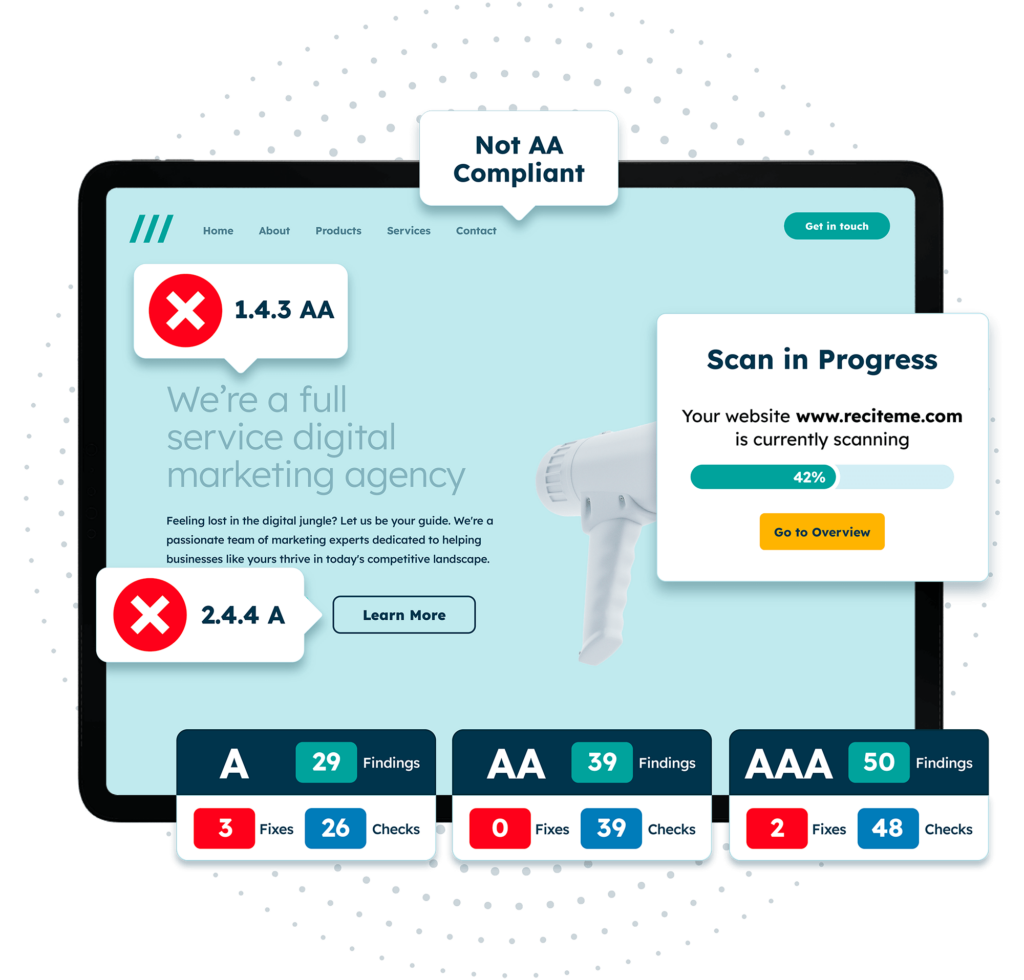
Maintaining ADA compliance
Once you’ve identified ADA compliance violations, you can go ahead and start addressing them one-by-one. But that’s the easy part. Where Shopify stores often fail is maintaining ADA compliance long term.
The reality is, websites change over time. They adapt to customer needs and have to keep pace with SEO best practices. At the same time, regulations like the WCAG are always evolving, demanding more and more from your Shopify business.

Keeping on top of such a dynamic landscape requires more than just a one-time fix. It demands an organization-wide approach to accessibility, where everyone is on the same page. Inclusive practices should be embedded into company culture. To achieve this, train your staff in accessibility best practices so that they are better equipped to identify and deal with any issues. Additionally, keep an eye on regulatory updates and evolving standards.
Conclusion: Build an accessible Shopify store today
Ultimately, there’s more to building a compliant Shopify store than most think. It starts with a comprehensive audit of your website, before moving on to the systematic fixing of any identified issues. It then requires regular monitoring and staff training, all while keeping an eye on ever-evolving guidelines. Don’t wait for a lawsuit to take action – adopt a proactive approach to accessibility, so that you can build a Shopify store which is not only legally-compliant but also user-friendly, inclusive, and ready to serve a broader audience.
Need more help becoming ADA compliant?
The following resources are packed full of actionable tips and expert advice for making your digital content compliant with the Americans with Disabilities Act:
Free ADA Accessibility Training
Take the first step to ADA compliance by completing our training course.
Free ADA Accessibility Guide
Ensure your organization is meeting the requirements for ADA compliance.

